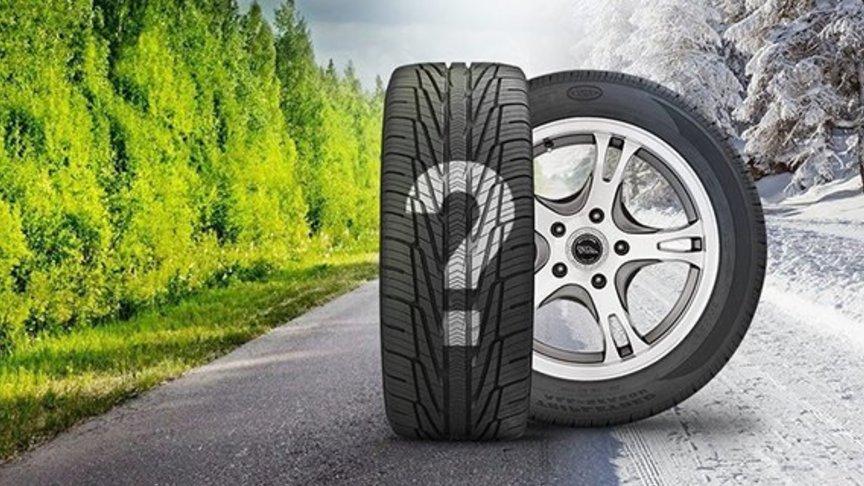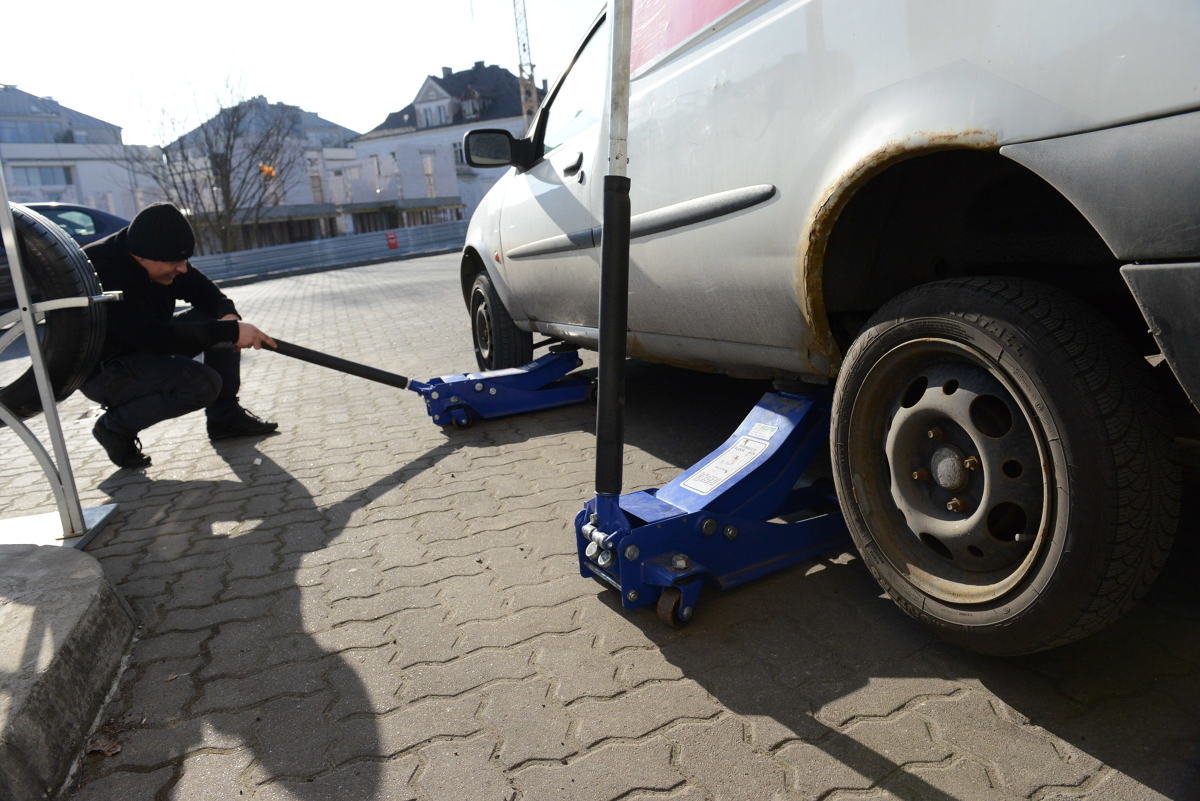
Replacing winter tires with summer tires. When to conduct?
Content
 Spring is approaching, and with it the time to replace winter tires with summer ones. Tires can now be replaced and tire shops are required to follow special safety regulations to reduce the risk of infection due to the ongoing pandemic.
Spring is approaching, and with it the time to replace winter tires with summer ones. Tires can now be replaced and tire shops are required to follow special safety regulations to reduce the risk of infection due to the ongoing pandemic.
Tires are the only point of contact between the car and the road. Their condition and quality directly affect the level of passenger safety, because the grip and braking distance of a car or a two-wheeled vehicle depend on their condition. However, those who believe that driving on winter tires in summer is less dangerous than without it are mistaken. Such an action can put us at risk of loss of health or life, because, according to ADAC, the braking distance from 100 km / h on winter tires in summer is even 16 meters longer than on summer tires.
When to change tires? The most important temperature
But should we go to the site as soon as the first snow melts? According to experts, absolutely not. The general rule is that we should refrain from changing tires until the average daily temperature reaches 7 (or more) degrees Celsius to avoid the return of frost. Therefore, it is better to be aware of the weather forecast, because temporary warming does not guarantee a significant change in surface temperature.
It is also worth remembering to control the date of manufacture of tires, because it is not recommended to use one set for more than 8 years. After this time, the rubber compound ages and loses its elasticity, no matter how we store it. The production date is printed on the tire and you can check it yourself - the first two digits indicate the week and the last four indicate the year the tire was put into service. Of course, if we use the car intensively, tires can wear out much faster.
Riding in summer with winter tires. Why is this a bad idea?
Not every tire can provide safety at high speeds and roads heated to 60ºC, a winter tire certainly cannot.
The fact that winter tires are completely uneconomical is only part of the problem. Yes, by driving on tires that are not suitable for the season, we consume a few percent more fuel and accelerate the wear of the tread of winter tires, which is made of a soft compound. However, this is primarily dangerous - winter tires slow down much worse in summer and cling to the road worse in corners, both on dry and wet roads. They are also much less resistant to hydroplaning and overheat more in summer conditions, which can damage their inner layers. When driving at 140 km/h, a popular size car wheel spins over 1000 times per minute. What happens if an overloaded and hot winter tire bursts under such conditions?
– The tread of winter tires is made from a softer rubber compound, so they do not become stiff in colder temperatures and remain flexible. This feature, which is an advantage in winter, becomes a big disadvantage in summer when the hot road reaches 50-60ºC or more. Then the grip of the winter tire is drastically reduced. Winter tires are not adapted to summer weather conditions! Thus, the use of winter tires in summer is completely unjustified from the point of view of driving safety and economy,” notes Piotr Sarnecki, CEO of the Polish Tire Industry Association (PZPO).
Let's not forget that the insurer may refuse to pay out or reduce the amount of compensation if the driver contributed to the accident by driving a wrecked car. In this case, the malfunction is defined as driving on tires that do not ensure traffic safety. Yes, the car rides on them, but poor lateral support, a greater tendency to skid in the rain, or even a ten-meter longer braking distance in an emergency makes you think about the meaning of such a ride. In the event of an accident with the wrong tires, the cost of repairing the damage will far exceed the cost of a complete set of tires and vacation fuel. Let's be wise before evil - it sounds trite, but nevertheless this principle always works in life.
Simply changing tires is not enough, as they need to be looked after during daily use. Special attention should be paid to several elements.
1. Check the rolling direction of summer tires
When installing tires, pay attention to the markings indicating the correct rolling direction and to the outside of the tire. This is especially important in the case of directional and asymmetric tyres. Tires must be installed according to the arrow stamped on its side and marked "Outside/Inside". A tire that is installed incorrectly wears out faster and runs louder. It also won't provide a good grip. Mounting method does not matter only for symmetrical tires, in which the tread pattern is identical on both sides.
2. Carefully tighten the wheel bolts.
The wheels are subject to high overloads, so if they are tightened too loosely, they can come off while driving. Also, don't twist them too tight. After the season, stuck caps may not come off. In such situations, it is not uncommon to have to re-drill the bolts, and sometimes the hub and bearing have to be replaced.
The editors recommend: SDA. Lane change priority
For tightening, you need to use a wrench of a suitable size, too large can damage the nuts. In order not to twist the thread, it is best to use a torque wrench. In the case of small and medium passenger cars, it is recommended to set the torque wrench at 90-120 Nm. Approximately 120-160 Nm for SUVs and SUVs and 160-200 Nm for buses and vans. To avoid problems with unscrewing screws or studs, it is advisable to carefully lubricate them with graphite or copper grease before tightening.
3. Wheel balancing
Even if we have two sets of wheels and do not need to change tires to rims before the start of the season, do not forget to rebalance the wheels. Tires and rims deform over time and stop rolling evenly. Before assembling, always check that everything is in order on the balancer. Well-balanced wheels provide comfortable driving, low fuel consumption and even tire wear.
4. Pressure
Incorrect pressure reduces safety, increases fuel consumption and also shortens tire life. When inflating tires, follow the values specified by the manufacturer in the car's owner's manual. However, we must remember to adjust them to the current car load.
5. Shock absorbers
Even the best tire does not guarantee safety if the shock absorbers fail. Defective shock absorbers will make the car unstable and lose contact with the ground. Unfortunately, they will also increase the vehicle's stopping distance in an emergency.
How to store winter tires?
For the replacement of a standard set of wheels, we will pay a service fee of approximately PLN 60 to PLN 120. How do you store winter tires? Wash your tires first. After washing off the largest contaminants, you can use a car shampoo. Even a simple soap solution will not hurt. The optimal place for storage is a closed room: dry, cool, dark. You must ensure that the tires do not come into contact with chemicals, oils, greases, solvents or fuels. Do not store tires on bare concrete. It is better to put boards or cardboard under them.
If the tires are on rims, the whole set can be placed on top of each other, next to each other or hung on hooks. So they can wait until next season. The tire pressure must be in accordance with the recommendations of the manufacturer of our vehicle. Tires alone—no rims—are more of a hassle. If they are to be stored horizontally (on top of each other), put the bottom half on top each month. Thanks to this, we will prevent deformation of the tire along the bottom. We do the same when storing tires vertically, i.e. next to each other. Experts recommend rotating each piece on its own axis every few weeks. Tires without rims must not be hung from any hooks or nails, as this may damage them.
See also: This is how the Ford pickup looks in the new version
